Key in a search term below to search our website.
Key in a search term below to search our website.
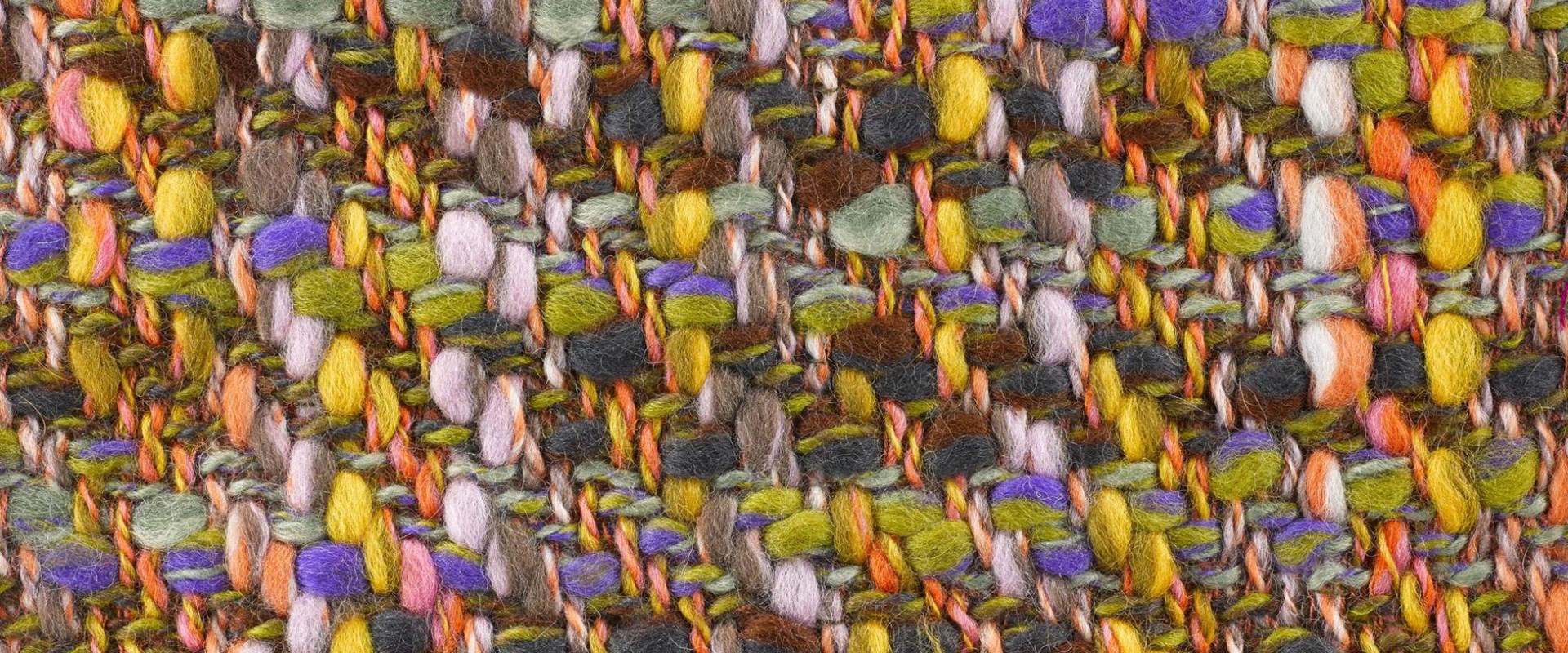
Textile designer and artist Bernat Klein put Scottish fashion on the map during the 1960s. Discover his colourful mohairs and tweeds, inspired by the landscape around his Scottish Borders studio.
Serbian artist, colourist and textile designer Bernat Klein (1922–2014) founded his business in the Scottish Borders in 1952, where he produced innovative fashion fabrics for the couture houses of Europe.
National Museums Scotland holds the archive of this visionary textile designer, comprising over 4,000 items including garments, textiles, paintings and press material.
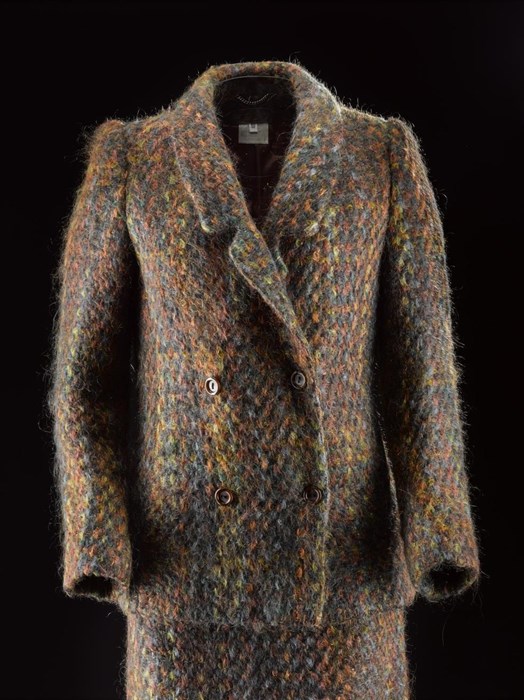
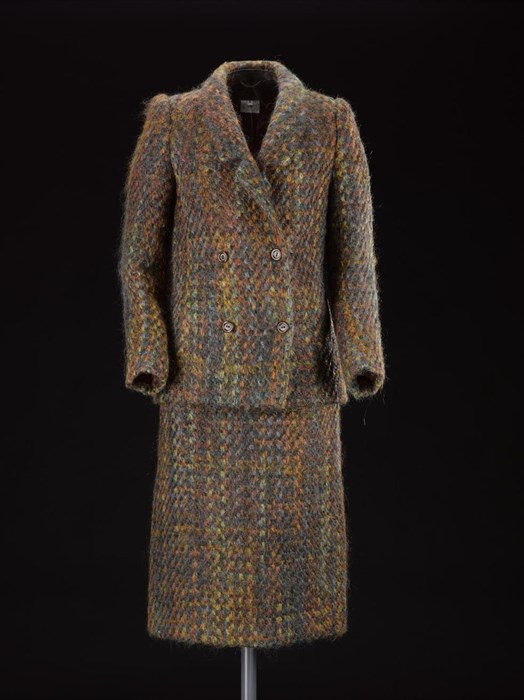
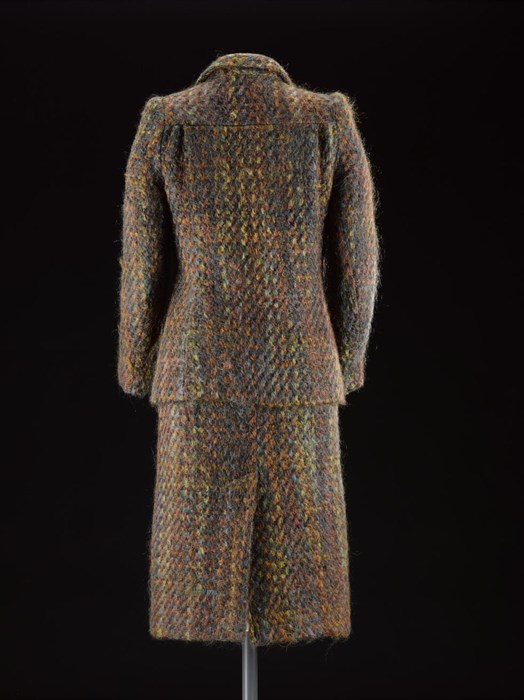
Above: Woman's suit in wool and mohair tweed in yellow, green, blue-grey, dark blue, orange, red and medium and dark brown, fabric designed by Bernat Klein, garment possibly designed by Janet Medd, Edinburgh, 1980-1981.
Bernat Klein was born in Senta, Yugoslavia (now Serbia) in 1922, to a family who worked in the textile industry. After the Second World War, he moved to the United Kingdom and set up a textile design business in Galashiels in 1952. In a career spanning over 40 years, Klein designed fabrics for fashion and interiors, and worked as a colour consultant and industrial designer for various British and Scandinavian firms.
In the early 1960s, Bernat Klein produced a range of ground-breaking woven womenswear fabrics, which featured bold colour effects and unexpected combinations of materials, such as velvet ribbon with brushed mohair. Klein experimented for many years to perfect a technique called ‘space-dyeing’, which allowed a single cloth to contain multiple colours.
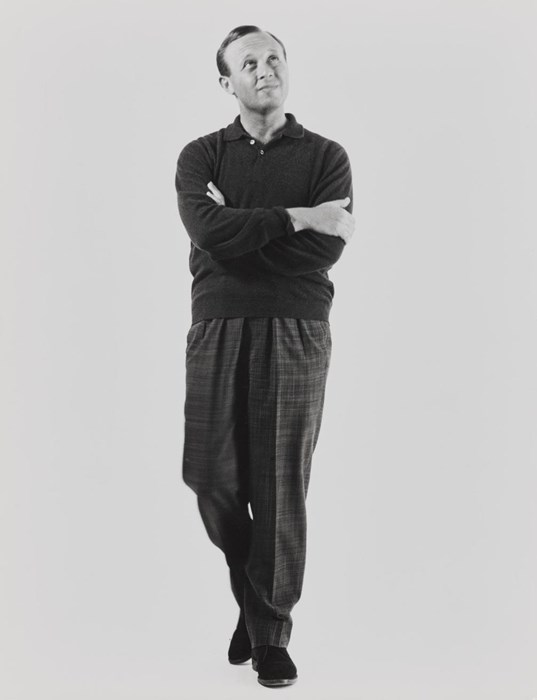
Above: Bernat Klein photographed by Martin Mandel, 1963–66 © Bernat Klein.
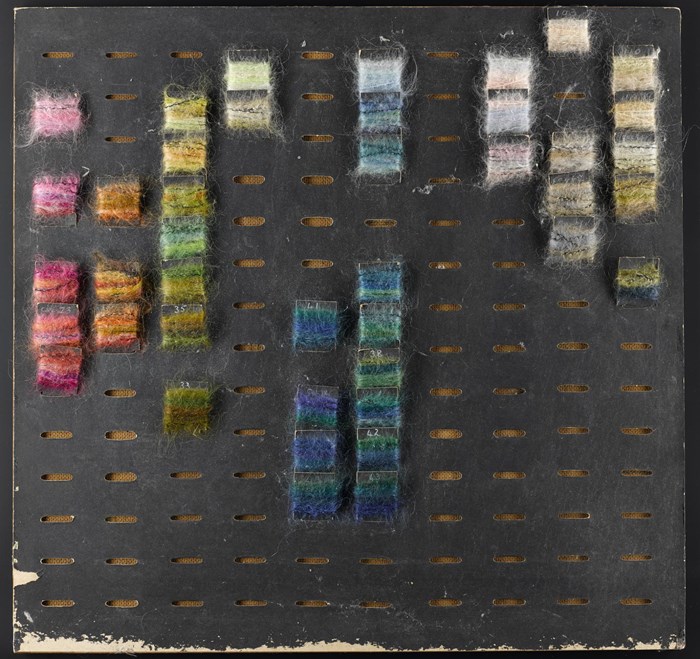
Above: This colour board (1960–80) was designed and used by Bernat Klein in his textile design business. Made of hard board with a black cardboard front, it has 140 oval holes for balancing colours in the design of woven textiles.
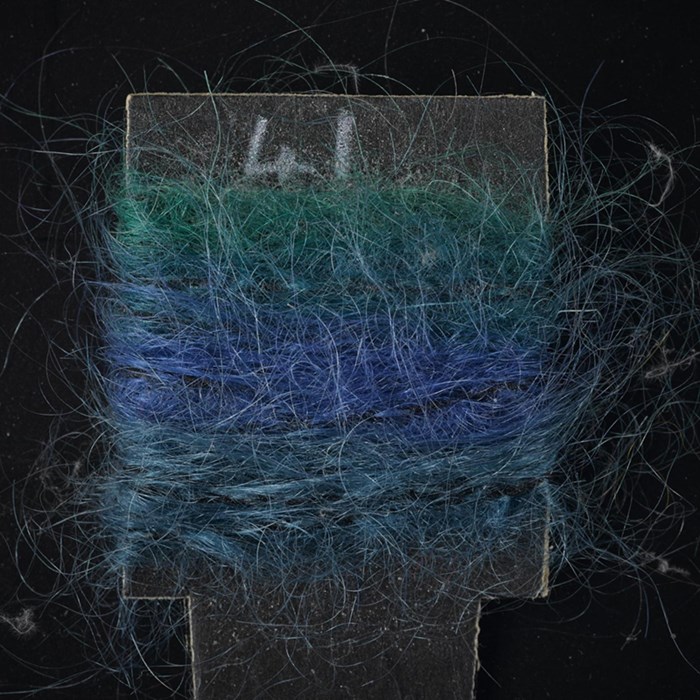
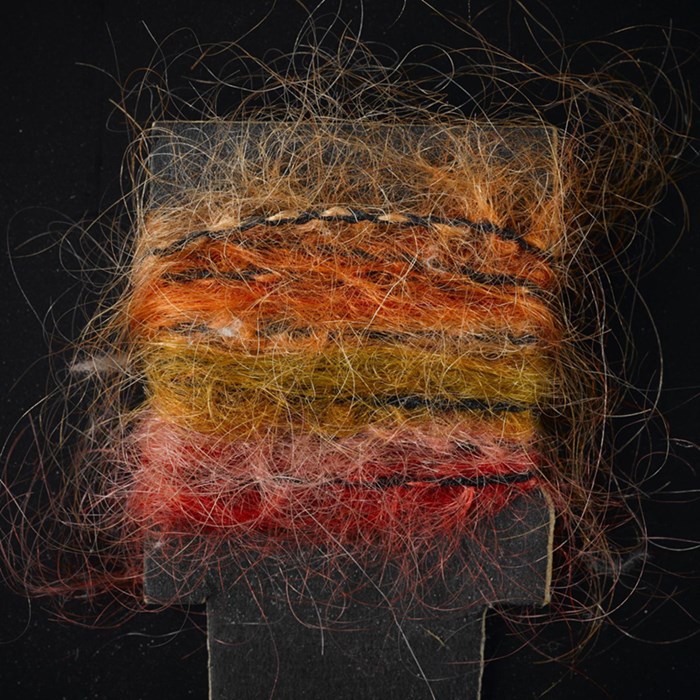
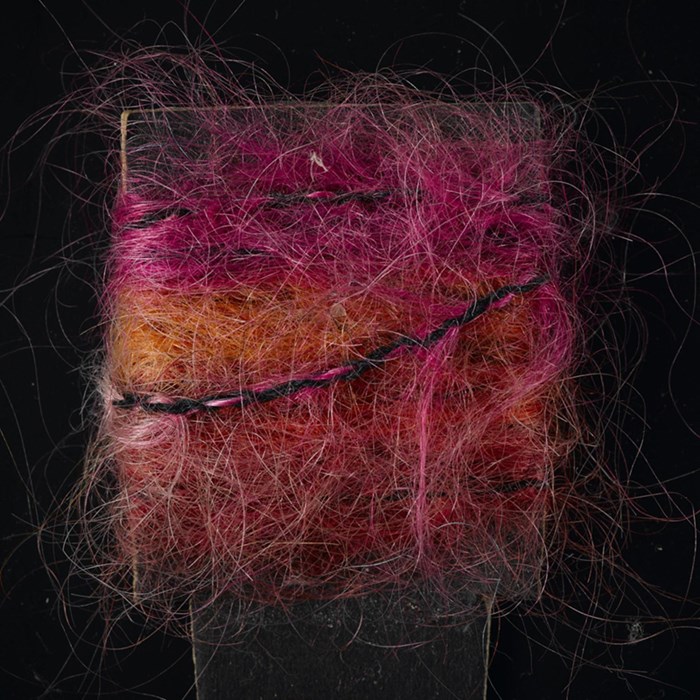
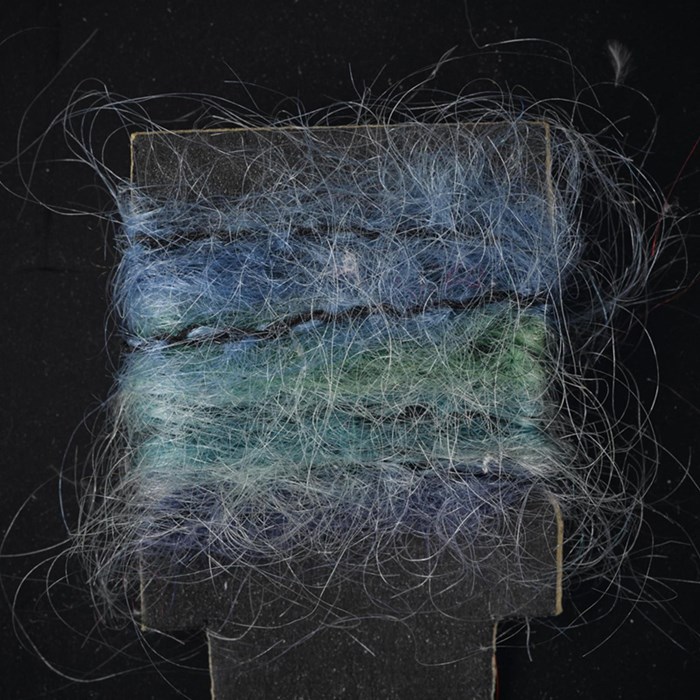
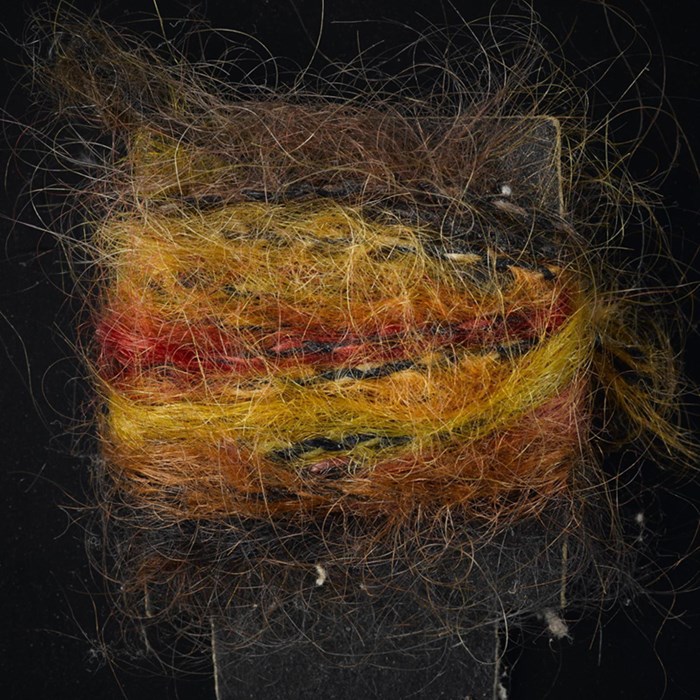
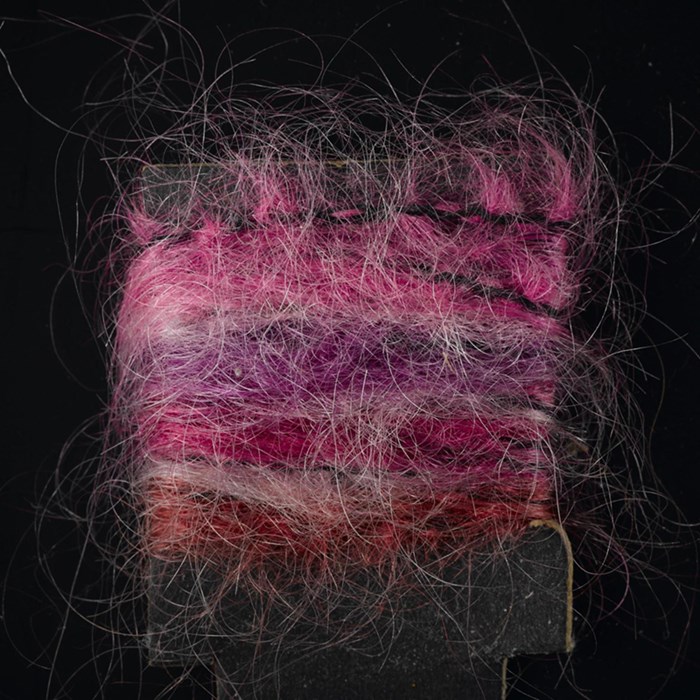
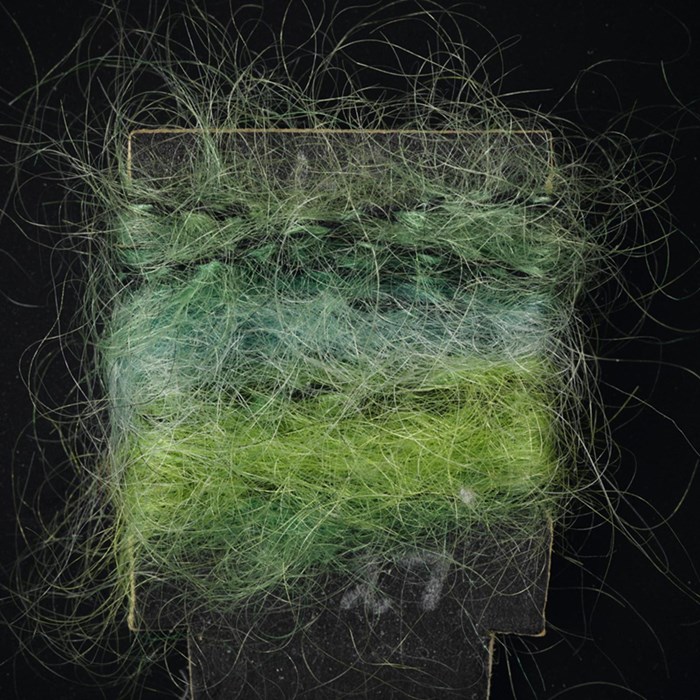
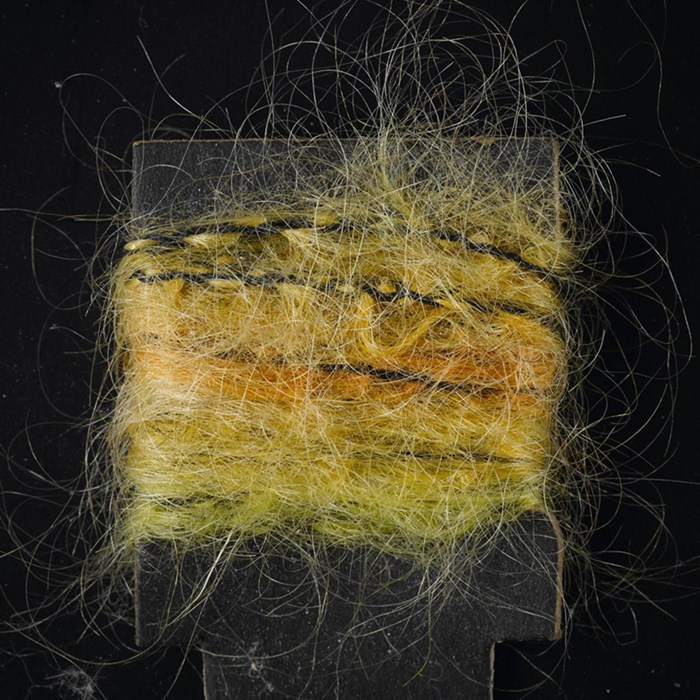
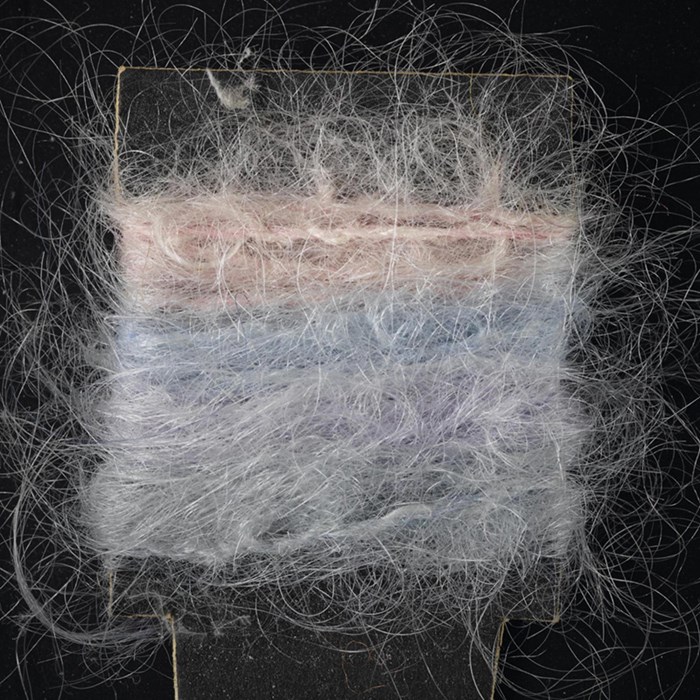
Above: Samples of space-dyed mohair by Bernat Klein, 1960–80. © Bernat Klein.
His breakthrough into the European couture market came when his mohair tweed fabric was chosen by Coco Chanel for her Spring 1963 collection. Other couture houses, including Dior, Yves Saint Laurent and Hardy Aimes, also used Klein’s luxurious textiles in their designs.
In 1962, the trade journal Wool described Klein’s fabrics as:
“the first real breakthrough in colour and design technique for over half a century.
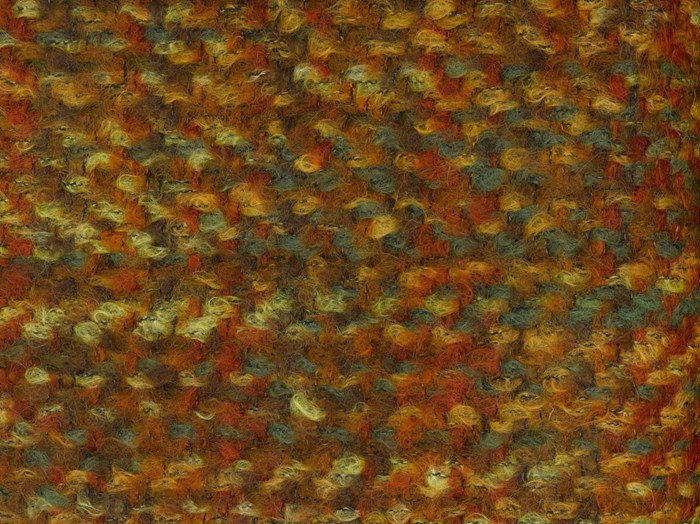
Above: Sample of woven space-dyed mohair tweed entitled Briar, in red, green, brown and yellow (1960). © Bernat Klein.
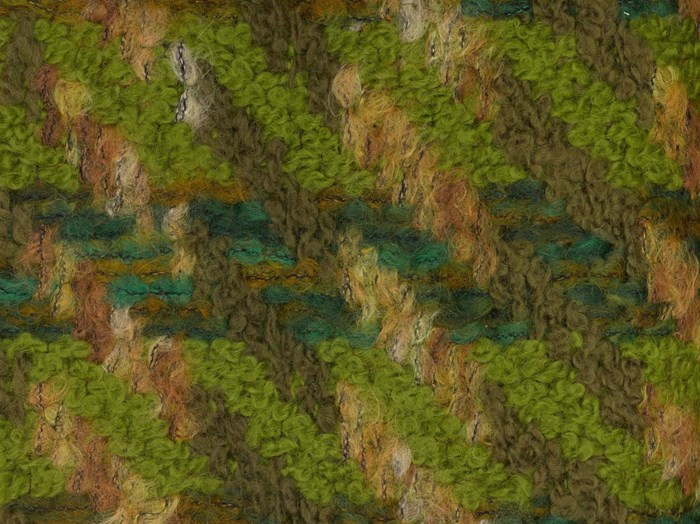
Above: Sample of woven space-dyed mohair tweed entitled Mace, in light and dark green, brown, yellow and orange (1961). © Bernat Klein.
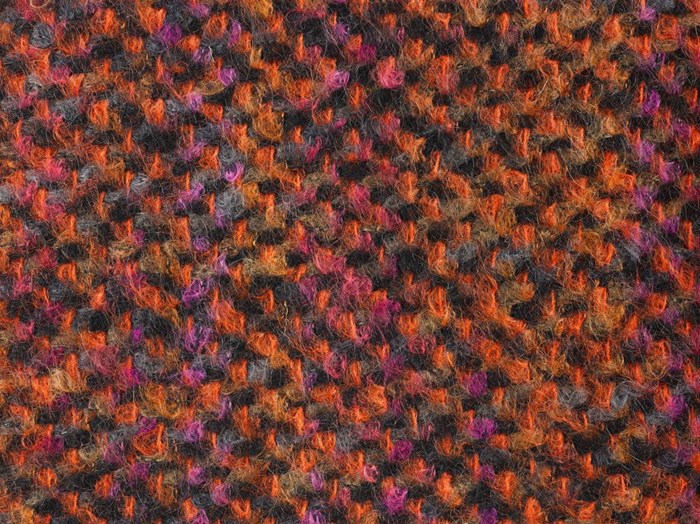
Above: Sample of woven space-dyed mohair tweed entitled Holly, in orange, pink, purple, brown, grey and black (1960). © Bernat Klein.
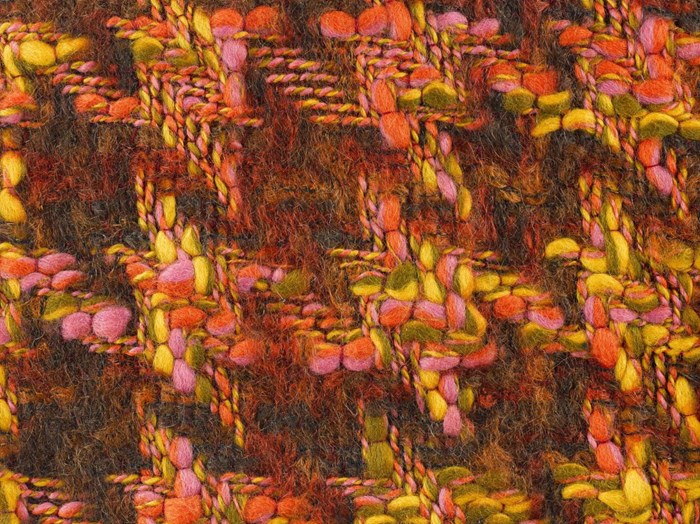
Above: Sample of woven space-dyed mohair tweed entitled Maple, in yellow, pink, orange and light and dark brown (1964). © Bernat Klein.
Klein originally studied fine art at the Bezalel School of Arts and Crafts in Jerusalem and painted throughout his life, taking inspiration from the natural world. Klein used painting to experiment with colour and texture and his studies in oil paint fed into his textile design practice.
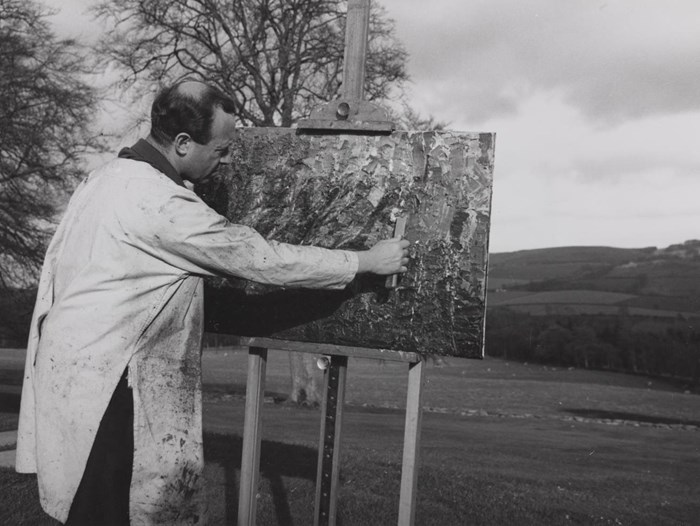
Above: Bernat Klein painting at an easel with a palette knife, wearing a white smock. Photo taken by Moira Leggat, 1960s. © Bernat Klein.
Colour lay at the heart of Klein’s design process and he was influenced by modern art and colour theory. He was fascinated by the pointillist works of Georges Seurat (1859–1891). Like Seurat, Klein was interested in breaking an image down into planes of colour, which could be mixed by the human eye.
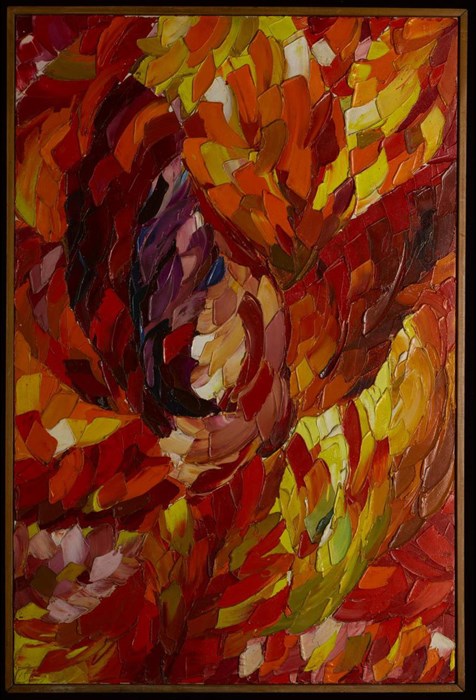
Above: Oil painting entitled 'Tulip', an abstract image of a tulip made up of wide overlapping strokes in shades of orange, red, yellow, purple, green, white, pink and blue. The painting is signed on the back in handwritten ink 'Bernat Klein '62'. © Bernat Klein.
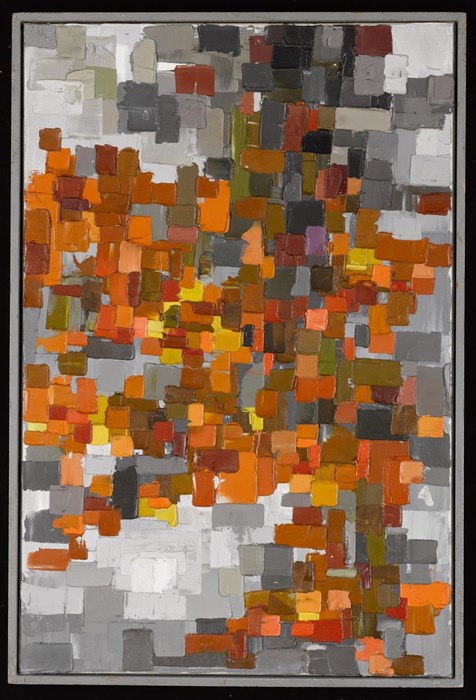
Above: Oil painting entitled 'Autumn Trees', an abstract image made up of overlapping squares and rectangles in shades of grey, brown, orange and red with some yellow and one purple square. The painting is signed 'BK 64'. © Bernat Klein.
Klein was inspired by the Scottish landscape and the views around his home in the Scottish Borders were the subject of many of his paintings and textile designs. He commissioned his friend the modernist architect Peter Wormersley to design his home, High Sunderland, in 1956.
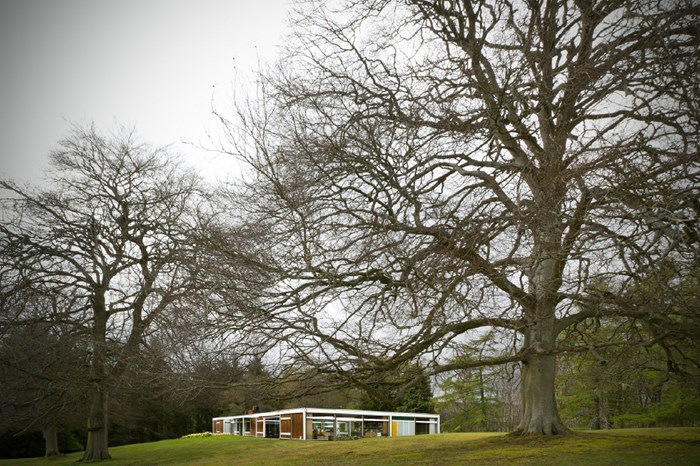
Above: High Sunderland, Galashiels, Selkirkshire.
Womersley also modernised Klein’s mill Netherdale and designed the Bernat Klein design studio in 1969. Klein was a champion of modernist architecture and design and his home served as the venue for fashion shows and photo shoots.
In 1963, Bernat Klein organised a press trip, inviting leading British fashion journalists to Galashiels to visit Netherdale Mill, where his textiles were produced, and to a fashion show at his home, High Sunderland. The trip resulted in extensive media coverage, Sunday Times fashion journalist Ernestine Carter wrote:
“We were galvanised by a completely new fabric: soft and light, woven into broken checks or stained glass patterns in off beat colours.
Above: Photos from the two-day press event hosted by Bernat Klein in Edinburgh and Galashiels showing his textiles, yarns and garment collections at Waukrugg Mill and High Sunderland house. Photographs by Peter Waugh, April 1963. © Bernat Klein.
In 1969, Bernat Klein began designing polyester fabrics for Terlenka, one of the most progressive manufacturers of manmade fibres in Europe. These print designs were based on magnifications of his oil paintings and the interaction of colour. Klein would go on to produce his own range of screen printed polyester fabrics, which retailed under the name Diolen.
The National Museums Scotland Bernat Klein archive contains hundreds of samples of his iconic couture textiles. Fashion houses such as Pierre Balmain, Pierre Cardin, Dior, Nina Ricci, Ronald Patterson, Yves St Laurent, John Cavanagh, Hardy Aimes, Mattli and Victor Stiebel used Klein’s fabrics throughout the 1960s.
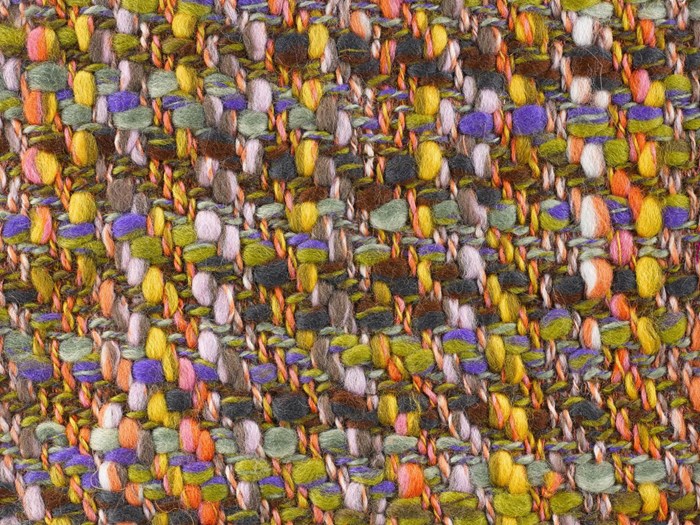
Above: Sample of tweed entitled Festival, woven in multiply wool slub yarns and polyester and worsted yarns, in purple, grey, yellow, green, blue, orange, pink and brown (1963–67). © Bernat Klein.
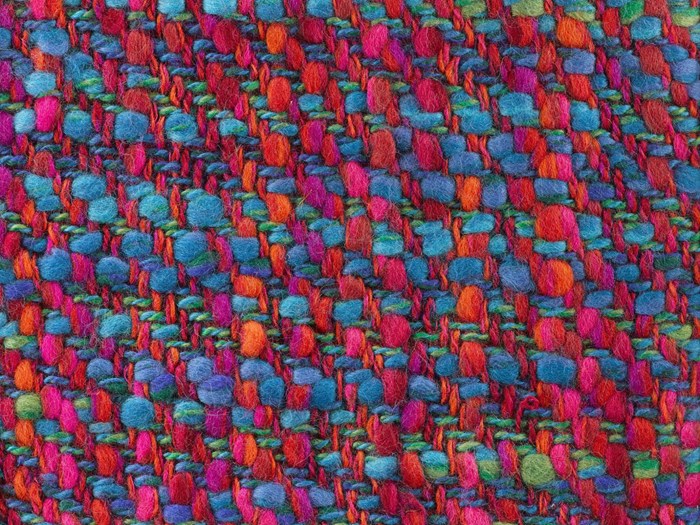
Above: Sample of tweed entitled Aurora, woven in multiply wool slub and multiply wool and polyester and wool yarns, in light and dark blue, orange, red, pink, purple and green (1964–65). © Bernat Klein.
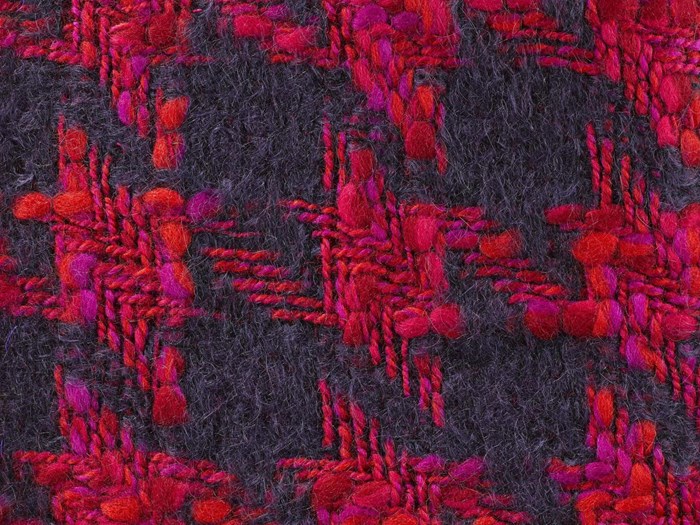
Above: Sample of woven houndstooth mohair tweed entitled Shiraz, woven in brushed mohair and multiply wool slub yarns and wool and polyester yarns, in dark blue, purple, orange, pink and red (1964–65). © Bernat Klein.
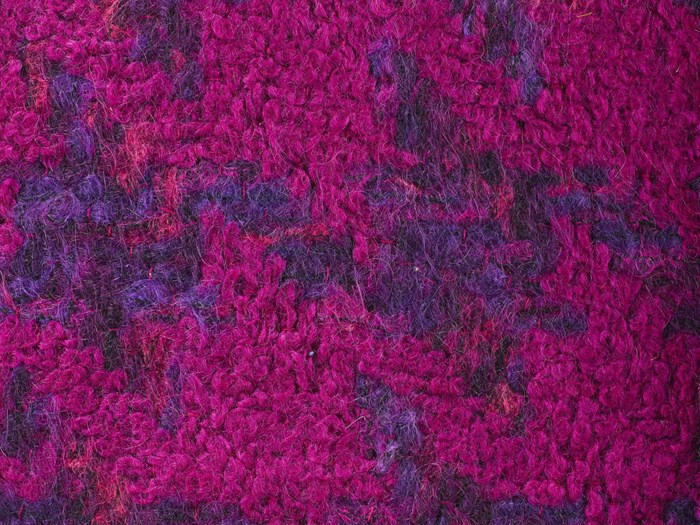
Above: Sample houndstooth mohair tweed, woven in looped brushed mohair and space-dyed brushed mohair yarns and wool and polyester and wool yarns, in purple, pink, dark blue and black (1960–70). © Bernat Klein.